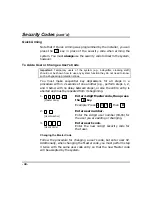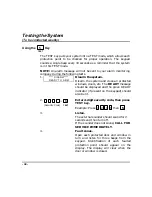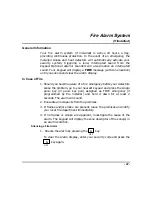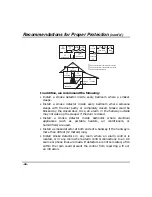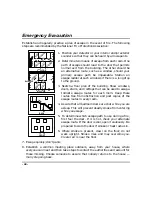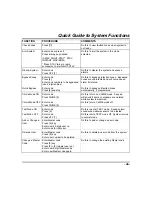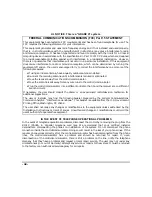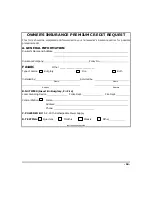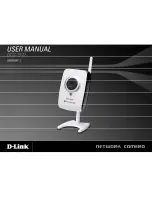
- 43 -
Maintaining Your System
Taking Care of Your System
The components of your security system are designed to be as
maintenance-free as possible. However, to make sure that your
system is in reliable working condition:
1. Test your system weekly.
2. Test your system after any alarm occurs (see Testing the System
section).
Replacing Batteries in Wireless Sensors
Each wireless sensor in your system has a 9-volt or 3-volt battery. The
system detects a low battery in any wireless sensor, including smoke
detectors, the optional personal emergency transmitter, and the
optional portable wireless keypad. (The system detects a low battery
in a portable wireless keypad as soon as one of its keys is pressed, and
responds be displaying 00 on the wired keypad.)
Alkaline batteries provide a minimum of 1 year of operation, and in
most units and applications, provide 2–4 years of service. Three-volt
lithium batteries provide up to 4 or more years of operation. Actual
battery life depends on the environment in which the sensor is used,
the number of signals that the transmitter in the sensor has to send,
and the specific type of sensor. Factors such as humidity, high or low
temperatures, or large swings in temperature may all lead to the
reduction of actual battery life in an installation.
If you have a low battery in a wireless sensor, the keypad displays a
LOW BATTERY message. In addition, a battery-operated smoke
detector with a low battery emits a single "chirp" sound
approximately once every 20–30 seconds, identifying itself as the
smoke detector with the weak battery.
NOTE: The LOW BATTERY message comes on as a warning that
battery replacement in the indicated sensor(s) is due within 30 days.
In the meantime, the sensor causing the low-battery indication is still
fully operational.
Wireless
sensors may
not have
been
installed in
your security
system.
Summary of Contents for FA148C
Page 3: ......


